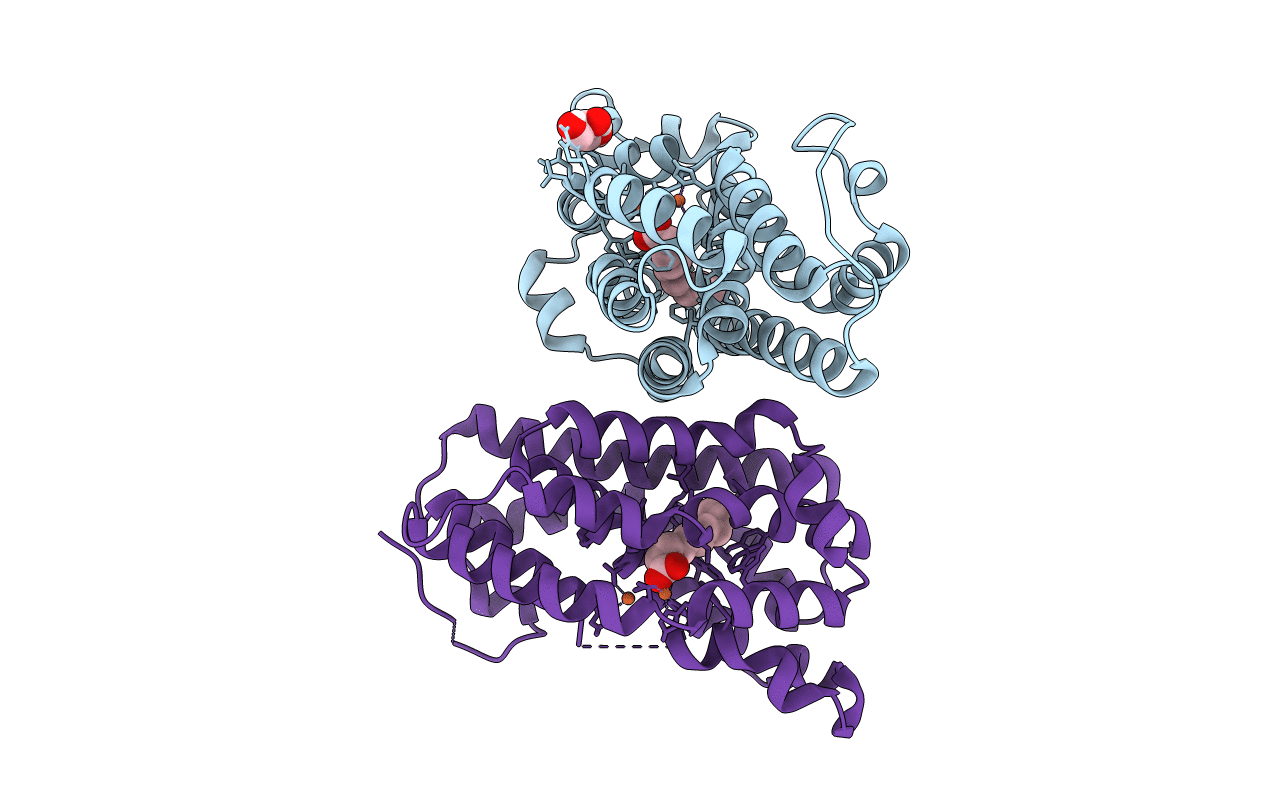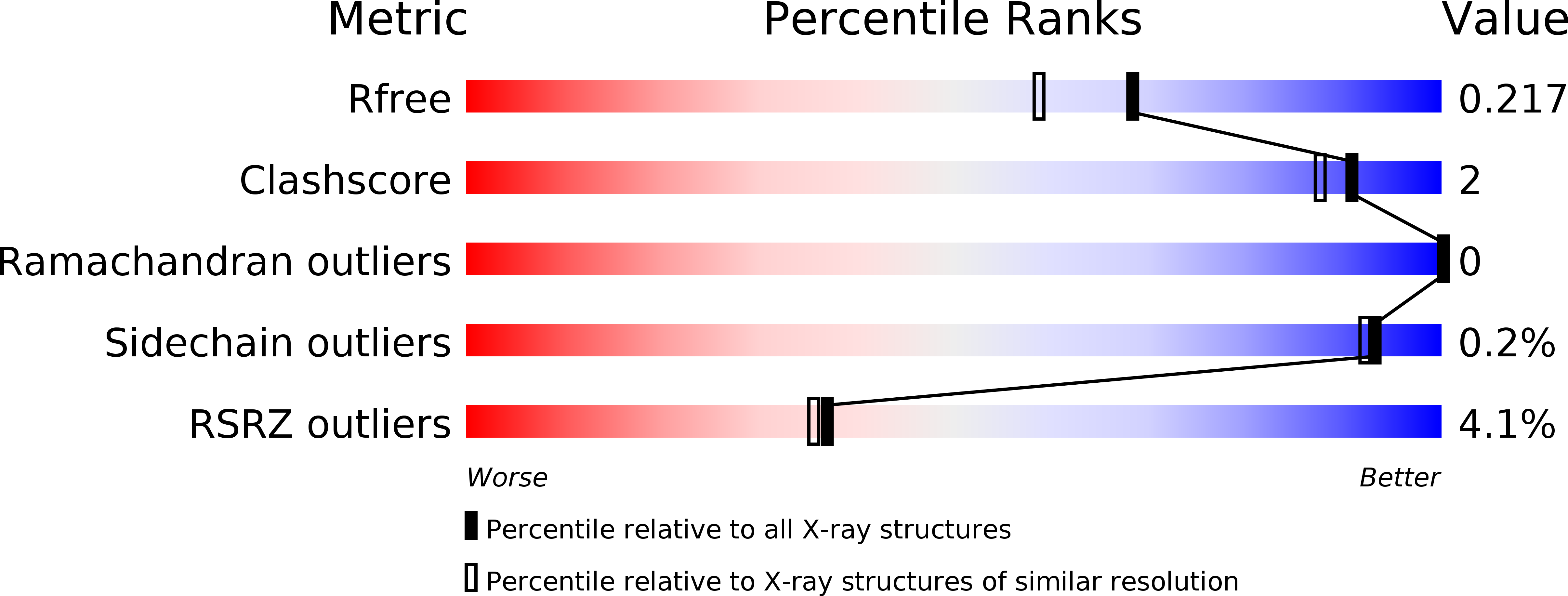
Deposition Date
2019-05-30
Release Date
2019-09-18
Last Version Date
2023-10-11
Entry Detail
PDB ID:
6P5Q
Keywords:
Title:
X-ray structure of Fe(II)-soaked UndA bound to lauric acid
Biological Source:
Source Organism:
Pseudomonas fluorescens (Taxon ID: 294)
Host Organism:
Method Details:
Experimental Method:
Resolution:
1.86 Å
R-Value Free:
0.21
R-Value Work:
0.19
R-Value Observed:
0.19
Space Group:
P 2 2 21


